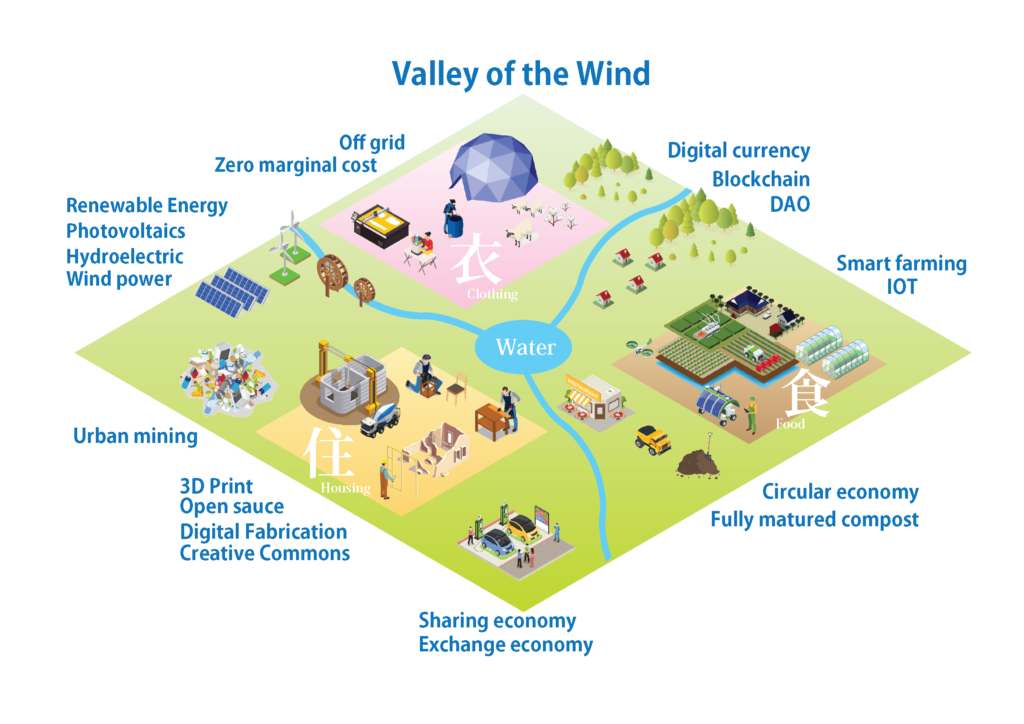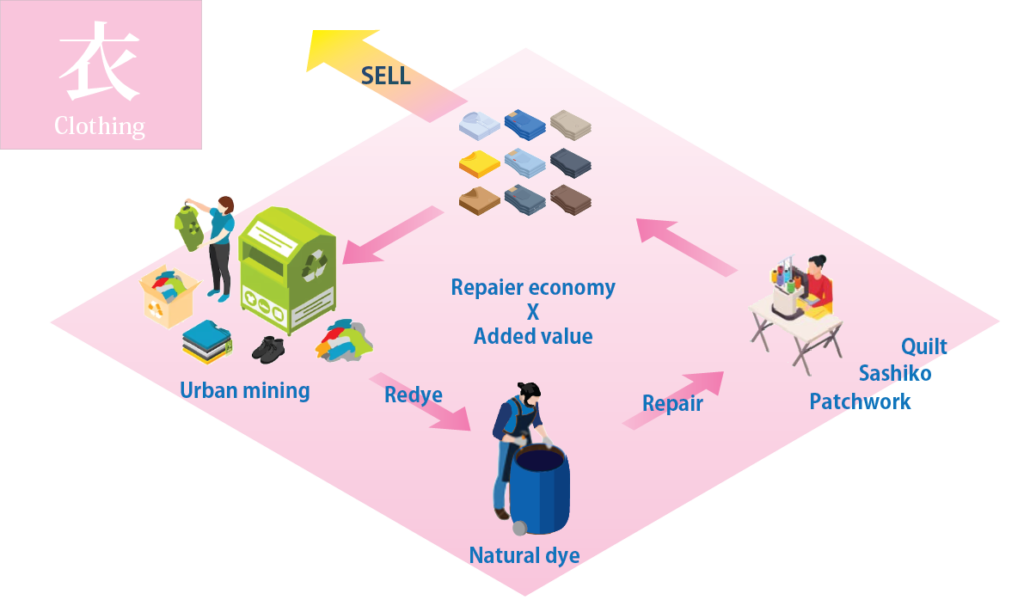Building upon the principles outlined in “Valley of the Wind” , we propose incorporating local materials and sensing technology into a segment of our textile production. This endeavor requires the synergy of various existing technologies, including digital fabrication, 3D printing, smart farming, and digital currency.
Furthermore, by integrating renewable energy sources with off-grid energy systems, our ultimate aim is to achieve a Zero Marginal Cost Society. In this future vision, we envision a world where most products can be created without relying on fossil fuels, resulting in zero marginal costs.
This is the envisioned matrix for the ‘Valley of the Wind’ project.

Clothing, food, and housing are the cornerstones of our fundamental existence. ‘The Valley of the Wind’ seeks to integrate these essential elements into a cohesive support system for our lives. In this context, we will present a segment of the project focusing on clothing and textile production, utilizing local materials such as natural fibers and natural dyes.
Housing:
Due to a declining population, numerous houses in this village have become vacant. We have the opportunity to renovate and repurpose them using modern production systems like digital fabrication. Many of these houses are available as open-source projects.
In the context of housing production, it’s essential to utilize local materials such as wood, soil, bamboo, and even repurposed waste materials through urban mining.
Food:
Sensing and robotics technology are valuable assets in reducing the labor required for agriculture. This means we don’t have to devote our entire lives to farming, freeing up time for other pursuits.
Furthermore, we can harness the potential of food waste from our homes or restaurants to create rich compost. This waste-to-compost process transforms our discarded materials into fertilizer for growing vegetables, forming a self-sustaining and fully circular system.
Clothing:
For this aspect, it’s essential to utilize local materials like banana fiber, wool, cotton, silk, etc. However, it’s important to note that this method is limited in terms of mass production, so the focus is on local production for local consumption.
Another approach is to repurpose existing fabrics for garment creation. Given the abundance of fabrics and garments already produced, we can recycle and customize them ourselves. The more we personalize these garments, the more value we add to them.

We have several proposals within the realm of “Clothing” and one of them is the concept of the repair economy. This is an economic system centered around repairing or re-dyeing clothing items to prolong their use. Some garments can even be passed down through generations, and the act of repairing and preserving them over time adds a unique artistic dimension to each piece. This approach allows us to continuously enhance the value of these garments.
The sensor-controlled indigo container ‘Mr Pod’ aligns with the concept of the repair economy.